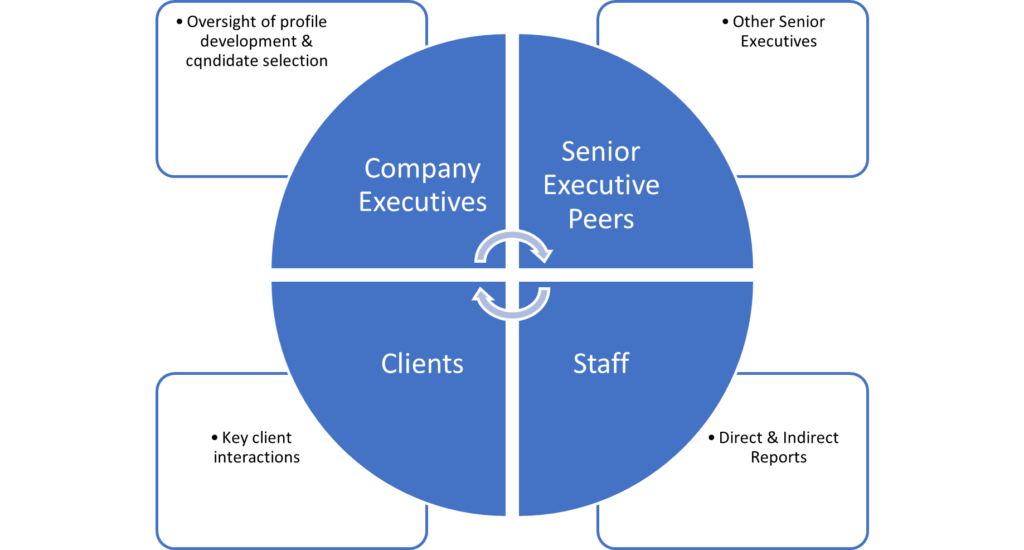Oftentimes in the beginning of a search process I find that discussions with company executives tend to focus on finding candidates who will match up to the company’s culture. It’s another way of discussing a person’s fit to the present and desired culture.
I mention change to a desired culture because anytime a company places a new executive into a key position that executive is bringing established decision-making, motivators, and behavioral preferences into the new company’s environments. That new executive will be expected to use those talents and preferences to further develop the company’s culture changes that were discussed at the beginning of the search process.
Interestingly, company executives may not fully understand the impact that a new executive will have in the short and longer term. If the search process is designed effectively, there will be a variety of individuals within the company who participate in developing the position profile. This includes direct and indirect reports, those to whom the position will report, as well as co-executives, and perhaps key clients with whom that new executive will be expected to interact. That said, it should be evident that rushing the search process benefits neither the company nor candidates.
Figure 1. Illustration of Inputs to Position Profile Development

Impacts of Environmental Change
Let’s take a moment to consider how an environmental change can develop in anticipated or unanticipated ways.
- Collaborative meetings – perhaps the former executive in the position being recruited did not use a collaborative decision-making process to engage members of his/her management team, yet the new executive fully engages members of the management team in a collaborative decision-making process. By itself, it may appear that this will be an insignificant change. However, based on my experience in managing changes in the processes used to develop and execute collaborative decision-making this one change can significantly impact –
- How the management team views its new role – from a directive to a collaborative method, meaning the team will now be expected to develop decisions with others v. receiving decisions from the executive. This one change can reverberate throughout the new executive’s chain of command and interactions with other departments.
- How the management team interacts with each of its employees – perhaps encouraging and then implementing a more collaborative and team-based decision process that is characterized by “driving decisions” to the lower levels of the department, empowering employees to participate in the decision process.
- This bottom-up decision planning process can have powerful and positive impacts on the department’s culture and its perception by others outside the department.
- Introduction of new operating procedures – if there is an imperative to develop and then implement new operating procedures within the new executive’s department, it should be discussed at the outset of the search process so that those who develop the position profile, the hiring executive(s) and candidates understand the expectations for these changes.
- I have observed numerous instances where the new executive develops and implements new operational procedures with and without the involvement of management team members.
- Where team members were not involved, results varied. If the changes made sense to others, were warranted, and team members thought they were necessary, then changes to the procedures were accepted without controversy.
- On the other hand, if team members did not accept the changes it became a point of contention, controversy, and, in a few instances, led to the dismissal of the new executive.
Summary
These examples illustrate the need for the executive team to develop a comprehensive search process that understands the implications of certain candidate selection alternatives, especially in a manner that matches the company’s desire for culture change. Done right, pursuing an effective person-future fit recruitment strategy is bound to make a positive impact on the business. Done wrong, results will not rise to the expectations initially sought. Interested in understanding how to better measure decision-making, motivators, and behaviors in an effective person-future fit process? Take this complimentary assessment to measure your EQ.